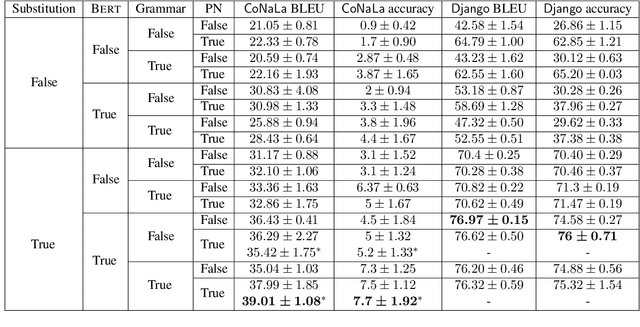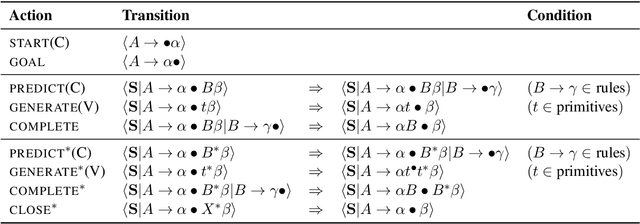The impact of lexical and grammatical processing on generating code from natural language
Paper and Code
Mar 16, 2022



Considering the seq2seq architecture of TranX for natural language to code translation, we identify four key components of importance: grammatical constraints, lexical preprocessing, input representations, and copy mechanisms. To study the impact of these components, we use a state-of-the-art architecture that relies on BERT encoder and a grammar-based decoder for which a formalization is provided. The paper highlights the importance of the lexical substitution component in the current natural language to code systems.
* Article accepted to the Findings of Association for Computational
Linguistics 2022
 Add to Chrome
Add to Chrome Add to Firefox
Add to Firefox Add to Edge
Add to Edge